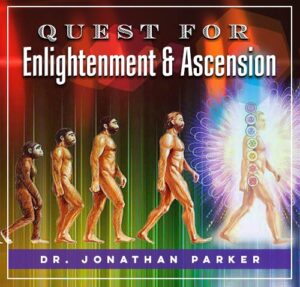Can the Universe Be Explained with One Theory?

Looking for more amazing products? Check out our online store and explore our collection here! Happy shopping!
Before diving in, please note: This post is for informational purposes only. If you’d like to know more about how we approach topics, feel free to check out our friendly Disclaimer Page.
Hey there, amazing readers! 
We’re committed to delivering quality posts, and your support (even just sticking around despite the ads) means everything to us. So, bear with us, and thanks for helping us keep the good vibes rolling. Now, on to the fun stuff!
TRANSLATE BUTTON AT THE END OF THE ARTICLE
A Quick Overview
Ever found yourself gazing at the stars, pondering the immense expanse of the universe?
You’re not alone.
The quest to explain our cosmos has been a theme throughout human history.
Scientists and philosophers alike have sought a single theory that encapsulates the mysteries of everything: from the tiniest particles to the vast galaxies.
But can one theory truly explain it all?
In this article, we’ll dive deep into this fascinating question, exploring the intricacies of the universe and the theories that aim to unify our understanding.
1. Introduction: The Mystery of Universal Theories
Imagine standing on a beach, peering at the ocean, and thinking about what lies beneath the waves.
The universe works similarly; we can see the surface, but the depths remain a mystery.
Theories in physics are akin to boats trying to navigate those waters.
Some float well, while others sink or drift aimlessly.
The allure of a universal theory is powerful.
If we could encapsulate everything—from gravity to quantum mechanics—into one grand narrative, it would revolutionize our understanding of existence.
Yet, the universe is a complex tapestry, with each thread representing different forces and particles.
As we explore this idea, we’ll discover why some scientists believe a single explanation might be unattainable.
2. The Quest for a Single Unified Theory
The idea of a single theory for the universe is often called "theory of everything" or TOE.
It evokes images of Einstein sitting in deep thought, searching for a formula that explains it all.
But how do we even begin this quest?
The journey starts with understanding fundamental forces: gravity, electromagnetism, and nuclear forces.
Each force has its own set of rules, equations, and quirks, which seems to complicate our search.
Many physicists believe that uniting these forces could lead us to a single cohesive theory.
Every time a new discovery emerges, it adds another layer to the puzzle.
For instance, the detection of gravitational waves by LIGO confirmed a prediction Einstein made a century ago.
Each breakthrough tantalizes us, suggesting that we might just be on the brink of a monumental discovery.
3. A Brief History of Theoretical Physics
Understanding the universe is no new endeavor.
Historical figures have laid the groundwork for our current theories.
Newton introduced the laws of motion and gravity in the 17th century, helping us understand celestial mechanics.
Einstein followed with his groundbreaking theories of relativity, redefining our perceptions of time and space.
Quantum mechanics emerged in the early 20th century, revolutionizing our understanding of atomic and subatomic particles.
Each new theory didn’t just tweak the previous ones; they often contradicted them.
This shake-up means that what we once thought to be absolute truths are now open for debate.
Explore the Path to Spirituality and Enlightenment – Start Here.
The pursuit of a unified theory has faced trials, triumphs, and the occasional existential crisis!
4. Understanding the Big Bang and Its Implications
One crucial piece of our cosmic puzzle is the Big Bang theory.
This theory posits that the universe began as a singularity around 13.8 billion years ago, expanding rapidly.
Here are some key points:
The Big Bang set the stage for the formation of galaxies, stars, and planets.
It also laid the groundwork for the cosmic microwave background radiation, a remnant of that explosive moment.
With the universe continually expanding, we’re left with questions about its ultimate fate.
The implications of the Big Bang are profound.
They challenge our conception of time and space.
If the universe is expanding, what does that mean for our understanding of gravity and cosmic structure?
5. Exploring Gravity: The Force that Binds Us
Gravity is one of the most recognizable forces.
It keeps our feet on the ground and governs how celestial bodies interact.
Newton described gravity as an attractive force between masses.
Einstein expanded this view by illustrating that mass curves space-time.
This curvature means that objects in motion will follow the contours of space-time, creating the orbits we observe.
However, gravity is notoriously difficult to reconcile with quantum mechanics, leading to a significant gap in our understanding.
Many physicists dream of a theory that seamlessly integrates gravity with other fundamental forces.
This endeavor seems daunting, yet it’s critical for a holistic view of our universe.
6. Quantum Mechanics: The Dance of Tiny Particles
Quantum mechanics, on the other hand, dives into the bizarre behavior of particles at the atomic and subatomic levels.
Particles can exist in multiple states at once—a phenomenon known as superposition.
They interact in ways that seem counterintuitive, like entanglement, where particles remain connected even across vast distances.
These principles challenge our classical intuition, making quantum mechanics a tantalizing yet elusive field.
What’s fascinating is that quantum mechanics has practical applications, from semiconductors to medical imaging.
Yet, the challenge remains: how do we harmonize these peculiar behaviors with the gravitational force that governs cosmic structures?
7. String Theory: A New Dimension of Understanding
String theory proposes a fascinating idea: that the fundamental building blocks of the universe aren’t point particles, but tiny vibrating strings.
These strings can oscillate in different frequencies, giving rise to various particles.
The theory suggests extra dimensions beyond our familiar three, which could explain why gravity is weaker than other forces.
However, it’s not yet experimentally confirmed, leaving us with more questions than answers.
String theory embodies both hope and skepticism within the scientific community.
Some believe it could ultimately lead us to a unified theory, while others argue it may be too complex to validate empirically.
8. Can We Merge Quantum and Relativity?
One of the most significant challenges in theoretical physics is merging quantum mechanics with general relativity.
General relativity explains the cosmos at large scales, while quantum mechanics deals with the minute.
They function beautifully within their own domains, yet collide dramatically in extreme environments, such as black holes.
Many physicists explore concepts like loop quantum gravity and other approaches, hoping to unite these seemingly disparate theories.
The quest for a unified framework is like trying to fit two puzzle pieces from entirely different boxes.
Each piece has its design, yet together, they create a more comprehensive picture of reality.
9. Challenges in Finding One Universal Theory
The pursuit of a universal theory brings its share of hurdles.
One significant obstacle is the reliance on mathematical models that often exceed our current understanding.
Theoretical predictions must be tested experimentally, but many proposals remain unverified due to technological constraints.
Additionally, the sheer vastness of the universe complicates matters; can we ever capture its essence in a single equation?
Despite these challenges, the scientific community thrives on collaboration.
Researchers worldwide share insights, fostering a rich environment of ideas that may lead us closer to this elusive goal.
10. The Role of Dark Matter and Dark Energy
Embarking on the quest for a universal theory would be incomplete without considering dark matter and dark energy.
Dark matter, which makes up about 27% of the universe, exerts gravitational effects yet remains invisible to our instruments.
Dark energy, on the other hand, is believed to drive the universe’s accelerated expansion, making up roughly 68%.
Understanding these mysterious components is crucial for a comprehensive theory that explains cosmic phenomena.
These enigmatic forces challenge our current models and push scientists to rethink fundamental principles.
If we can decode their mysteries, we might be one step closer to a unified theory.
11. Exciting Future: Could We Crack the Code?
The future of theoretical physics is bursting with promise.
Advancements in technology allow for more precise observations and experiments.
Collaborations across disciplines could yield novel insights that challenge traditional paradigms.
Innovative thinkers continue to emerge, each contributing unique perspectives to this cosmic puzzle.
As we stand on the brink of potential breakthroughs, I can’t help but feel a sense of wonder.
Who knows what discoveries await us in the future?
Maybe we’ll find that universal theory—or maybe we’ll learn to embrace the mysteries that come with it.
Conclusion: The Joy of Cosmic Exploration Ahead
Exploring the universe is akin to diving into an endless ocean of knowledge.
While the idea of a single, all-encompassing theory is deeply appealing, our journey reveals the beauty of complexity.
Each theory and discovery adds richness to our understanding, even if it doesn’t fit neatly into a singular narrative.
So, as we continue to ponder the great mysteries of the cosmos, let’s celebrate the pursuit itself.
Whether we arrive at a unified theory or not, the joy of exploration and discovery is what truly matters.
Who knows?
The next breakthrough could change everything, and I, for one, can’t wait to see where this journey takes us!

The Enlightenment Journey is a remarkable collection of writings authored by a distinguished group of experts in the fields of spirituality, new age, and esoteric knowledge.
This anthology features a diverse assembly of well-experienced authors who bring their profound insights and credible perspectives to the forefront.
Each contributor possesses a wealth of knowledge and wisdom, making them authorities in their respective domains.
Together, they offer readers a transformative journey into the realms of spiritual growth, self-discovery, and esoteric enlightenment.
The Enlightenment Journey is a testament to the collective expertise of these luminaries, providing readers with a rich tapestry of ideas and information to illuminate their spiritual path.
Our Diverse Expertise
While our primary focus is on spirituality and esotericism, we are equally passionate about exploring a wide range of other topics and niches 

To ensure we provide the most accurate and valuable insights, we collaborate with trusted experts in their respective domains 
Our blog originally focused on spirituality and metaphysics, but we’ve since expanded to cover a wide range of niches. Don’t worry—we continue to publish a lot of articles on spirituality! Frequently visit our blog to explore our diverse content and stay tuned for more insightful reads.
Hey there, amazing reader! 
Check out our store here and take a peek at some of our featured products below! Thanks for being awesome!













